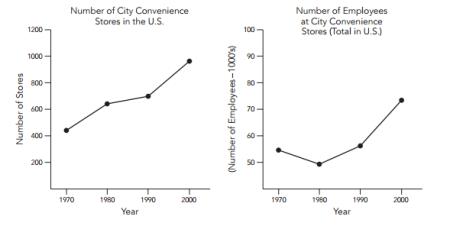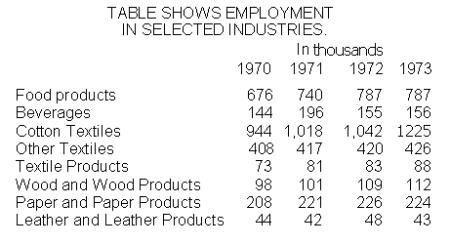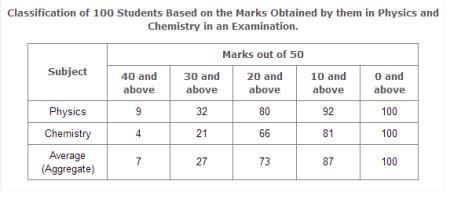GRE Quantitative Reasoning Questions
100 Data Interpretation Questions (Set 3)
| Select Exercise Lists |
By Question Type
Quantitative comparison
Numeric Entry
Word Problem
Data Interpretation
By Content
Arithmetic
Algebra
Geometry
Data Analysis
| Selected Set: 3 |
Directions: Questions 1 to 2 are based on the following data.
Directions: Questions 3 to 4 are based on the following data.
Directions: Questions 5 to 9 are based on the following data.



| Answer Sheet of Set 3 |
Check Answer:
1. Each of the following is a valid conclusion that can be drawn from the information in the graphs EXCEPT:
| from 1970 to 1980, the number of stores increased by approximately 200 | |
| from 1970 to 2000, the number of stores approximately doubled | |
| from 1980 to 2000, the average number of employees increased by approximately 50% | |
| in 2000, there were about 75,000 employees | |
| from 1970 to 2000, the number of employees increased each decade |
2. According to the graphs, which of the following is the best estimate of the total number of employees in 1990?
| 75,000 | |
| 62,000 | |
| 57,000 | |
| 50,000 | |
| 48,000 |
3. Among the four years in which year in which industry maximum percentage of people were selected and what percentage it will be of total people selected in that year in all industries? (Find approximately)
| 1972, cotton industry, 36% | |
| 1971, cotton industry, 40% | |
| 1973, cotton industry, 40% | |
| 1971, food products, 30% | |
| 1973, cotton industry, 45% |
4. Among the four years in which industry maximum percentage of people were selected in that industry than the earlier year?
| cotton textiles | |
| Beverages | |
| food products | |
| other textiles | |
| wood and wood products. |
5. What is the different between the number of students passed with 30 as cut-off marks in Chemistry and those passed with 30 as cut-off marks in aggregate?
| 3 | |
| 4 | |
| 5 | |
| 6 |
6. If at least 60% marks in Physics are required for pursuing higher studies in Physics, how many students will be eligible to pursue higher studies in Physics?
| 27 | |
| 32 | |
| 34 | |
| 41 |
7. The percentage of number of students getting at least 60% marks in Chemistry over those getting at least 40% marks in aggregate, is approximately?
| 21% | |
| 27% | |
| 29% | |
| 31% |
8. The number of students scoring less than 40% marks in aggregate is?
| 13 | |
| 19 | |
| 20 | |
| 27 |
9. If it is known that at least 23 students were eligible for a Symposium on Chemistry, then the minimum qualifying marks in Chemistry for eligibility to Symposium would lie in the range?
| 40-45 | |
| 30-40 | |
| 20-30 | |
| Below 20 |